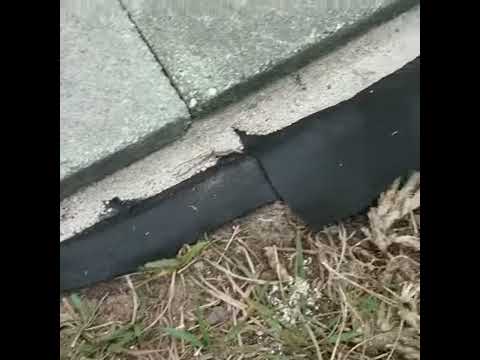Introduction
Paving installation is an important facet of both domestic and business landscape design in the Bay Area. Whether you're seeking to boost your driveway, patio, or sidewalk, recognizing the intricacies involved in paving can make all the difference between an effective task and a costly error. This overview aims to supply a detailed introduction of the paving setup process, specifically concentrating on interlacing pavers. With the right knowledge and approach, you can ensure that your paving project stands the test of time.
A Step-by-Step Overview to Successful Leading Setup in the Bay Area
Understanding Leading Installation
Before diving right into the specifics of leading installation, it's important to comprehend what it entails. Paving installation describes setting products such as rocks, concrete slabs, or blocks to produce long lasting surface areas for courses, driveways, patio areas, and extra. In the Bay Area especially, where climate condition can differ substantially, picking the appropriate materials and strategies can considerably impact durability and aesthetics.
Why Choose Interlocking Pavers?
Interlocking pavers have gotten enormous appeal as a result of their convenience and stamina. Unlike typical concrete or asphalt surface areas, interlocking pavers permit better drainage and can fit mild changes in ground movement. They come in various forms and shades, permitting house owners to customize their rooms creatively.

Selecting the Right Paver Installer
Choosing a qualified paver installer is one of the most important hardscapes services action in guaranteeing an effective paving job. Search for specialists with experience details to interlocking pavers and favorable customer reviews. Verify their credentials and request examples of previous work.
Planning Your Task: Initial Considerations
Before beginning your paving job, take into consideration these elements:
Purpose: Is this a driveway, outdoor patio, or walkway? Design: What style or look do you want? Budget: Just how much are you ready to spend? Permits: Exist any kind of regional guidelines you need to follow?Choosing Materials
The sort of products you choose will dramatically affect both longevity and appearance. Alternatives consist of:
- Concrete Pavers: Affordable yet much less customizable. Clay Bricks: Timeless look yet might be a lot more expensive. Natural Stone: Luxurious appearance however needs greater maintenance.
Each material has its advantages and disadvantages; knowing them will assist you make an informed choice.
Preparing Your Site
Proper site prep work is crucial for any paving installation job:
Clear the Area: Remove existing plants or debris. Excavation: Dig at the very least 6-8 inches relying on your installment needs. Grading: Make certain proper drain by sloping away from buildings. Base Layer Installation: Use squashed rock or crushed rock for stability.Laying Base Material
Once your website is prepped, it's cost to install travertine pavers time to set base materials:
Spread concerning 4-6 inches of base material uniformly throughout your surface area. Compact it using a plate compactor or roller for maximum stability. Check levelness with a straight side; adjust as necessary.Installing Edge Restraints
Edge restraints are critical as they help maintain your pavers in place in time:
Use plastic or steel edging around the perimeter. Secure them effectively with stakes or spikes at regular intervals.Laying Interlocking Pavers
Now comes the interesting component-- putting down those gorgeous interlocking pavers! Here's exactly how:
Start at one corner and lay pavers firmly versus each other. Use spacers if needed for uniform gaps. Cut pavers with a damp saw as required for edges.Filling Joints with Sand
After laying all your pavers:
Sweep polymeric sand into all joints between pavers. Compact again utilizing a plate compactor; this aids secure every little thing in place. Repeat sweeping till joints are full.
Sealing Your Paving Surface
While securing isn't constantly required, doing so can offer additional security against spots and weather condition damages:
Choose an appropriate sealer based on your paver material. Apply uniformly utilizing a roller; stay clear of puddles. Allow appropriate drying out time before utilizing the surface.Maintenance Tips for Durable Paving
To maintain your brand-new smooth surface:
- Regularly sweep away debris. Rinse off spills promptly. Apply sealant every few years if desired.
Common Errors During Paving Installation
Avoid these common risks during installment:
Skipping website preparation leads to uneven surfaces. Not condensing base layers effectively may result in sinking over time. Ignoring drain issues can create water pooling troubles later on.FAQs About Leading Installation
1. How long does paving installation take?
The timeline varies based on dimension and intricacy but usually varies from 1-- 5 days.
2. Can I set up interlocking pavers myself?
While DIY is feasible with cautious preparation, working with specialists makes certain much better results.
3. What is polymeric sand made use of for?
Polymeric sand fills joints between pavers and hardens when wet for enhanced stability.
4. Exactly how do I repair cracked pavers?
Cracked pavers can be replaced separately without needing to redo entire sections.

5. Is sealing necessary after installation?
Sealing isn't required however gives added security versus discolorations and wetness infiltration.
6. Can I install paving over existing concrete?
Yes, yet ensure that existing surfaces are stable; or else, think about elimination first.
Conclusion
In recap, taking on a paving job in the Bay Area requires cautious planning and execution-- from selecting ideal products like interlacing pavers to hiring an experienced installer who recognizes local conditions certain to California's climate obstacles-- each step plays an essential function in attaining success! With this overview handy, you're well-equipped to browse via each stage confidently while avoiding possible risks along the way! Pleased paving!